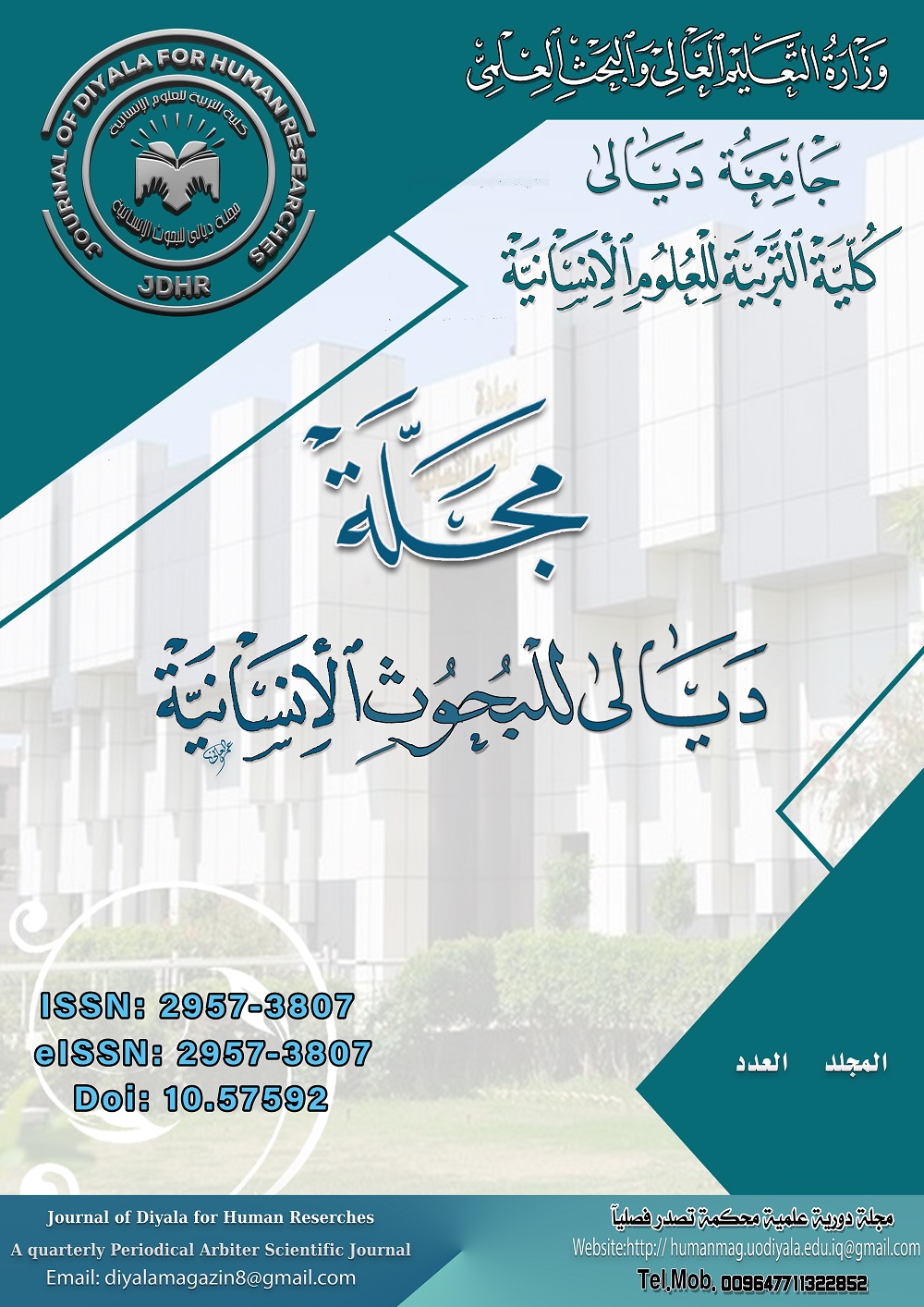الأنساق التعبيريّة في الخطاب القرآني , دراسة في ضوء سيمياء التواصل
Keywords:
التواصل – الخطاب– اللونAbstract
The Qur’anic discourse is organized into a tight communicative structure with various patterns that interact with each other to form its semantic and rhetorical appearance, so its meanings and purposes are established according to the contextual requirement, the communicative position, and the nature of the objective connotation. Since the meaning in the Qur’anic discourse is shaped by characteristics that are consistent with the structures of intention, research into communication requires focusing on its vectors of meanings and sending information. Diverse according to the position of the communicative discourse Communication is established according to systematic semantics that benefit from the signs within its discursive body, and in semiotics specifically, a methodology that draws from the resources of meanings, which opens up magazines that surround the contexts in terms of understanding and statement. Communicative meaning is entrusted with semiotic systems that determine meanings by following the interaction of signifiers with the dimensions of that context, as semiotics sets out to follow Meanings through their worlds, which constitute a dimension that refers to interpretive fields in discourse, so the characteristics of expression expand in the process of communication. Therefore, non-linguistic patterns emerge as an entrance that establishes the production of meanings and opens up for inferential effectiveness in light of the semiotics of communication through the pattern of color and the pattern of body movements, as they are the focus of research and the course of communicative work in a variety of ways. Its references and discursive formations.
Downloads
Published
Issue
Section
License
Copyright (c) 2024 CC BY 4.0 (http://creativecommons.org/licenses/by/4.0/)

This work is licensed under a Creative Commons Attribution 4.0 International License.

